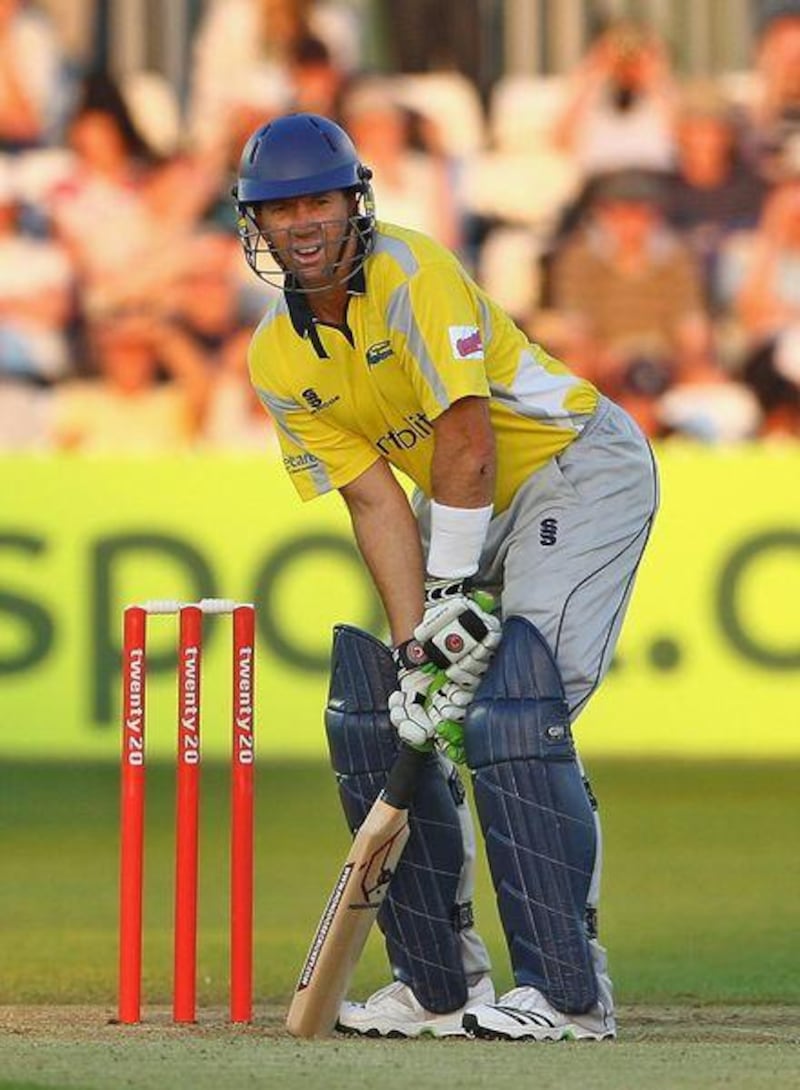Still recovering from a stroke, Marcus Codrington Fernandez made the arduous journey to Edgbaston and Headingley every day to watch England and Australia fight out this summer's Ashes series. He loves Test cricket, so it is surprising that he is the inventor of a bat that could help to kill off the five-day format of the game. His "Mongoose" bat has a longer handle and a shorter, thicker blade to actually connect with the ball.
To some, his proposition that a new bat is needed for the demands of the run-heavy Twenty20 format of cricket may seem preposterous. Why would any cricketer change the touch and feel of his bat, and his stance, overnight after years of growing up with a piece of cricket equipment that has barely varied over centuries? As one cricketer who tried it said: "It makes you feel naked." But while the measurements may be different, the bat's changes are modest enough that it has been accepted by the Marylebone Cricket Club (MCC), the body that uphold the laws of the game. In a sport where aluminium and graphite bats failed to make the MCC budge, the Mongoose maker managed to convince them to agree to a change in the bat for the first time since their inception in 1787.
"I knew that the bat design has not changed for more than 200 years," said Fernandez. "Also, I knew that I am doing something new in the most traditional sport in the world." Fernandez also realises that the change will not be immediate, even if his claims are confirmed that the Mongoose offers 20 per cent more power and 15 per cent added bat speed which allows a batsman more time to play or change his shots at the last moment, a huge benefit with strokes such as the switch-hit that Kevin Pietersen most famously employs.
It is the new array of shots - a requisite for T20 - with the same old bat that set the ball rolling for Fernandez, the global creative director of an advertising company. While in bed recuperating from his stroke, he was watching film of Geoffrey Boycott, the Yorkshire and English opener famous for setting up camp at the wicket. It struck Fernandez that the bat Boycott wielded decades ago was the same as the one modern cricketers use in T20. "I wanted a new tool for the T20 format of the game. But I didn't knew then what shape it would be."
That was two years ago. Before long, Fernandez had identified the problem area as the upper area of the traditional bat surface, which is used only for defence against rising balls - a technique that would not be part of a T20 batsman's attack-oriented arsenal of strokes. "By using the old bat, you effectively made one third of the bat defunct. So we experimented with the bat splice [the portion where the handle joins the bat]," said Fernandez.
After four months, Fernandez's prototype had a longer handle but retained the conjoining mechanism, using a different technique to retain the strength of the splice to match that of the big-hitting T20 specialists. Importantly there was no change in what the bat's blade is made of, willow, and hence the Mongoose satisfied the criteria spelled out by the MCC in Law 6 of the game's rules. That means the world governing body, the Dubai-based ICC, have no problems if batsmen start using it right away.
But the battle for acceptance has just begun for Fernandez, who travels to cricket grounds by bus to contact big-name players. And he's enjoyed some success. His most prominent "converts" are Stuart Law (Australia), Lou Vincent (New Zealand) and Dwayne Smith (West Indies). Smith gave the most eloquent demonstration so far of what the Mongoose can do with a blistering 26-ball knock of 59, including three sixes, that was instrumental in Sussex winning the English Twenty20 Cup final against Somerset on August 16.
Says Law: "Based on the few times I've used it this season [in T20 matches in England], it's caused quite a stir among players and fans. It's even being called a 'weapon of mass destruction'." "Once the player hits a few practice balls he understands what a difference the bat makes," said Fernandez. "The problem is the funding. I had pockets as deep as it could take us to the launch. I would love to get a player like Sachin Tendulkar. I am still hoping to get him to take up the bat one day.
"The other problem is that 90 per cent of the players already have existing contracts with bat manufacturers and even if they want to, they can't make the switch." Fernandez hopes his favourite cricketers - Tendulkar, VVS Laxman, Andrew Flintoff, Kumar Sangakkara and Adam Gilchrist [retired from Test cricket but still playing T20 in the Indian Premier League] - will embrace the Mongoose. In the meanwhile, he has taken the precaution of getting legal protection by way of patents, design and logo registration and trademarks.
For the concept to take off, large scale production and widespread acceptance by cricketers is needed, and this could be a gradual process, considering the years of tradition. It is also why Fernandez is holding back on his next target for innovation - the ball. While Fernandez is confident of handling the commercial aspects of getting his bat accepted, he feels getting Test specialists to use the Mongoose would give him even more satisfaction than acceptance by bit hitters such as Pietersen.
"Players like Pietersen can hit hard even with a pencil. The best way to use the Mongoose is to get players who are looking to hit straight and from the middle of the bat. "It is for those conventional players who have been trying but unable to hit sixes like others." Technically correct players like Rahul Dravid and Jacques Kallis struggled when the IPL was launched but they were doing their best to come to grips in the second season earlier this year. The Mongoose might help speed up things.
kshyam@thenational.ae






